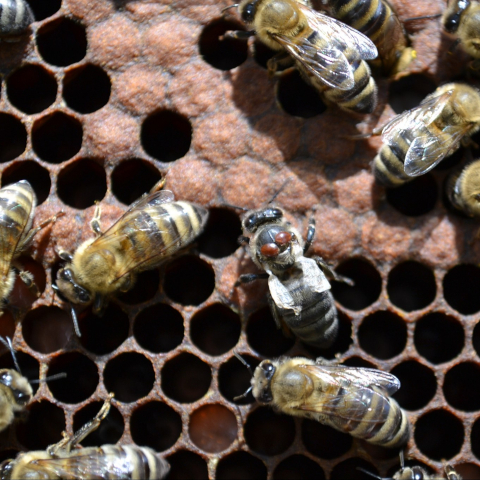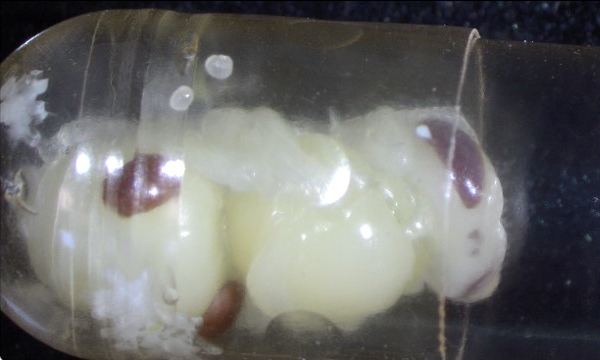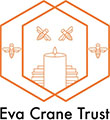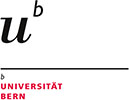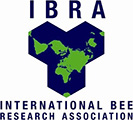ABOUT
The mite Varroa destructor is one of the major challenges of today’s beekeeping almost worldwide, both because of its direct damages to developing pupae and adults and the viruses it vectors.
This COLOSS Task Force is composed of researchers working on Varroa mite, bee health experts and extension workers. It currently includes around 150 members from more than 20 countries.
PURPOSE
The Varroa control Task Force members focus on developing and encouraging sustainable solutions for managing the ectoparasitic mite V. destructor (mainly), one of the most devastating threats to honey bees. The group’s philosophy is based on the adoption of Integrated Pest Management strategies (IPM).
The group’s specific aims are to:
- Evaluate beekeeper’s practices against Varroa in terms of efficacy and safety for honey bee populations and products (with Monitoring CP)
- Improve current management options and develop novel strategies
- Evaluate diagnostic methods for assessing Varroa infestation levels
- Assess the impact of infestation levels on colony survival and productivity
- Develop new research tools for studying Varroa biology and physiology
- Explore mechanisms of honey bee tolerance and resistance towards Varroa in different honey bee populations (in collaboration with RNSBB (Bee Breeding) Task Force)
- Evaluate Varroa resistance to different acaricides
- Provide recommendations for Varroa sustainable management to beekeepers (in collaboration with B-RAP CP).
RESEARCH OUTCOMES – PUBLICATIONS
Our Task Force has been actively conducting research and publishing findings on honey bee health and Varroa destructor management. The overview of the activity of our Task force was published in Bee World, 99:1, 14-16.
For details, Read the article →
The outline of our key results and publications so far:
Methods for Estimating Varroa Infestation
- 151 colonies, 9 apiaries, 4 countries (Algeria, Croatia, Italy, Poland).
- Compared two methods:
- 10-day natural mite fall
- Powdered sugar roll
- Key findings:
- Powdered sugar roll = practical IPM tool for beekeepers.
- Natural mite fall = more accurate, recommended for research and selection.
- Read the article →
Brood Interruption methods to control Varroa destructor
European-wide study (2020)
- 2-year experiment, 370 colonies, 10 countries.
- Tested queen caging, trapping combs, and brood removal.
- Key findings:
- Queen caging + oxalic acid (4.2%) = most effective.
- Biotechnical methods (no chemicals) showed comparable results.
- Read the article →.
Mediterranean study (2023)
- Conducted in 9 countries.
- Focused on trade-offs between brood interruption and honey production.
- Key findings:
- Brood interruption was confirmed as an effective strategy for reducing Varroa mite populations.
- Timing of queen caging effects the honey production
- Read the article →
Varroa resistance research
- The resistant Varroa population showed low mortality to amitraz (35%) and flumethrin (39.5%) compared to >90% in susceptible groups.
- Resistance was linked to overexpression of CYP3002B2, the first enzyme shown to metabolize both compounds.
- Findings highlight new mechanisms behind resistance and support evidence-based Varroa management.
- Read the article →
CSI Varroa
- Contacting in >20 countries and all 5 Continents
- Main variables monitored i) Colony strength (a) before the winter, (b) after winter- early spring, (c) in summer (any time before the main treatment(s)); ii) Natural mite fall in early spring; iii) Varroa on adult bees during the active season; iv) Estimate of the colony’s productivity (general judgment); v) Other general information
- Key findings: under evaluation
- Read the article →
ONGOING ACTIVITIES
- Varroa book for beekeepers (Norman Carreck, Fani Hatjina, Marco Pietropaoli, Maja Smodiš Škerl, Victoria Soroker, Flemming Vejsnæ) – preparation of 14 book chapters is in progress
- Impact of brood interruption on the colony health and productivity (Marin Kovačić, Aleksandar Uzunov) in collaboration with Virus TF- members from 10 countries participated – final analysis is in progress (Protocol)
- Monitoring acaricide resistance (Spyros Vlogiannitis, Konstantinos Mavridis, John Vontas) – members from 11 countries participated- analysis in progress
- Varroa in vitro rearing – (Cameron Jack, Delphine Panzera and Nurit Eliash) – The protocol is currently tested in different laboratories. (Protocol).
- CSI Varroa – (Fani Hatjina, Janja Filipi, Flemming Vejsnæs, Nikola Kezic) – The collection of data has been finalized and the analysis is pending
PLANNED ACTIVITIES
- Monitoring Varroa infestation around the globe – suggested by Peter Neumann
- Effect of queen ringing on Varroa infestation- suggested by Aleksandar Uzunov and Marin Kovačić
CONTACT
Are you interested in joining this COLOSS task force?
In case you are a COLOSS member you are welcomed to join and to suggest a new activity. If so, please contact one of the task force co-chairs below.





